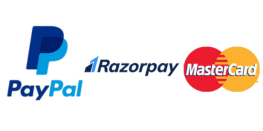
Retail Market 2025 Research Report By Type (Motor Vehicle And Parts Dealers, Food And Beverage Stores, Gasoline Stations, Miscellaneous Store Retailers, Cosmetics And Personal Care Stores, Clothing And Clothing Accessories Stores, Electronics And Appliance Stores, Furniture And Home Furnishings Stores, Supermarkets And Hypermarkets, Ecommerce And Other Non-Store Retailers, Building Material and Garden Equipment and Supplies Dealers, Pharmacies and Healthcare Stores, Sporting Goods, Hobby, Musical Instrument, and Book Stores), and by Region- Global Forecast to 2034
June-2025 Formats | PDF | Category: Manufacturing | Delivery: 24 to 72 Hours
Retail Market Insights
“The Retail market is projected to reach USD 59034.23 billion by 2034, growing from USD 34867.56 billion in 2025, at a CAGR of 9.3% during the forecast period from 2025 to 2034. “
In today’s fast-paced and ever-changing business landscape, the retail market plays a crucial role in driving economic growth and consumer spending. As we look towards the upcoming year, it’s essential to understand the current overview and potential growth opportunities in the retail sector.
The retail market encompasses a wide range of businesses, from brick-and-mortar stores to e-commerce platforms, offering products and services to consumers. With the advancement of technology and changing consumer preferences, the retail market has undergone significant transformations in recent years.
One notable trend in the retail market is the shift towards online shopping. E-commerce giants like Amazon have revolutionized the way consumers shop, offering convenience and a wide selection of products at competitive prices. As a result, traditional retail stores have had to adapt to the changing landscape or risk being left behind.
Despite the challenges brought on by the COVID-19 pandemic, the retail market is poised for growth in the upcoming year. As economies reopen and consumer confidence returns, retailers have the opportunity to capitalize on pent-up demand and drive sales.
One key area of growth in the retail market is the adoption of omnichannel shopping experiences. Consumers today expect a seamless shopping experience across all channels, whether they are shopping online, in-store, or through mobile devices. Retailers that can provide a cohesive omnichannel experience are likely to see increased customer loyalty and sales.
Market Drivers
Consumer Behavior: Understanding consumer preferences and behavior is key to driving retail market growth. By analyzing consumer data and trends, retailers can tailor their products and services to meet the evolving needs of their target audience.
Technological Advancements: The integration of technology in retail operations has revolutionized the way businesses operate. From e-commerce platforms to innovative payment solutions, technology has enabled retailers to reach a wider audience and streamline their operations.
Globalization: The interconnected nature of the global economy has opened up new opportunities for retailers to expand their reach and access new markets. International trade agreements and advancements in shipping and logistics have made it easier for retailers to source products from around the world.
Market Restraints
Competition: The retail market is highly competitive, with numerous players vying for consumer attention. As a result, retailers must constantly innovate and differentiate themselves to stay ahead of the competition.
Economic Uncertainties: Fluctuations in the economy can impact consumer spending habits and overall retail market performance. Retailers must be prepared to weather economic downturns and adapt their strategies accordingly.
Regulatory Challenges: Compliance with regulations and standards can pose challenges for retailers, especially in an increasingly complex regulatory environment. Staying abreast of regulatory changes and ensuring compliance is essential for long-term success.
Market Opportunities
E-commerce Growth: The shift towards online shopping presents a significant opportunity for retailers to expand their reach and tap into new markets. Establishing a strong online presence and seamlessly integrating online and offline channels can help retailers capitalize on the growing e-commerce trend.
Personalization: Tailoring products and services to meet the individual needs of consumers can create a competitive advantage for retailers. Implementing personalized marketing strategies and leveraging data analytics can help retailers deliver a personalized shopping experience.
Sustainable Practices: Consumers are increasingly conscious of environmental and social issues, driving demand for sustainable products and ethical practices. Retailers that embrace sustainability and social responsibility can attract eco-conscious consumers and build brand loyalty.
Market Challenges
Supply Chain Disruptions: Disruptions in the supply chain, such as natural disasters or political unrest, can impact product availability and delivery times. Retailers must have robust supply chain management strategies in place to mitigate risks and ensure continuity.
Changing Consumer Preferences: Rapidly changing consumer preferences and trends can pose challenges for retailers in terms of product development and inventory management. Keeping pace with shifting consumer demands requires agility and market responsiveness.
Cybersecurity Threats: With the increasing digitization of retail operations, cybersecurity threats pose a significant risk to retailers. Protecting customer data and safeguarding against cyber attacks is critical to maintaining trust and credibility with consumers.
Report Attributes
Metric | Details |
Market Size in 2025 | USD 59034.23 billion |
Projected Market Size in 2034 | USD 34867.56 billion |
CAGR (2025 – 2034) | 9.3% |
Leading Region | United States – One of the key players in the global retail market is the United States, which boasts a diverse range of retail outlets, from traditional brick-and-mortar stores to online giants like Amazon. The US retail market is known for its innovation and customer-centric approach, making it a leader in the industry. |
Market Segmentation | By Type, By Price, By Ownership, by Distribution Channel, and By Region |
Top Key Players | Walmart Inc., Amazon.com, Inc., CVS Health Corporation, Costco Wholesale Corporation, Schwarz Group, The Kroger Company, Walgreens Boots Alliance, Inc., The Home Depot, Inc., Carrefour S.A., Target Corporation, Nice Tuan, Bianlifeng, Suning.com, Seven-Eleven, Lawson, Family Mart, Ministop, V-Mart Retail, Infiniti Retail Ltd, Uniqlo, Muji, JB Hi-Fi, Auchan Holding SA, SPAR, Tesco, Metro AG, Musgrave, Sainsbury’s, Aldi GmbH & Co. KG, Co-operative Group Limited, McColl’s, Wm Morrison Supermarkets plc, Waitrose & Partners, Groupe Casino, Marks and Spencer Group plc, Mercadona, Rewe Group, Asda Stores Ltd |
Customization Scope | Report customization (equivalent to up to 4 analyst’s working days) with purchase. Addition or alteration to country, regional & segment scope. |
Retail Market Companies
The Retail Market’s competitive environment provides a thorough examination of the major participants. Company summaries, financial results, revenue generation, market potential, R&D expenditures, new market strategies, regional presence, strengths and weaknesses, product launches, product range, and application leadership are some of the data it contains. These statistics particularly relate to the businesses’ operations and areas of concentration in the Retail market.
The following are some of the leading companies in the Retail market:
- Walmart Inc.
- com
- CVS Health Corporation
- Costco Wholesale Corporation
- Schwarz Group
- The Kroger Company
- Walgreens Boots Alliance
- The Home Depot
- Carrefour S.A.
- Target Corporation
- Nice Tuan
- Bianlifeng
- com
- Seven-Eleven
- Lawson
- Family Mart
- Ministop
- V-Mart Retail
- Infiniti Retail Ltd
- Uniqlo
- Muji
- JB Hi-Fi
- Auchan Holding SA
- SPAR
- Tesco
- Metro AG
- Musgrave
- Sainsbury’s
- Aldi GmbH & Co. KG
- Co-operative Group Limited
- McColl’s
- Wm Morrison Supermarkets plc
- Waitrose & Partners
- Groupe Casino
- Marks and Spencer Group plc
- Mercadona
- Rewe Group
- Asda Stores Ltd
Retail Market Segmentation
Segment By Type
- Motor Vehicle And Parts Dealers
- Food And Beverage Stores
- Gasoline Stations
- Miscellaneous Store Retailers
- Cosmetics And Personal Care Stores
- Clothing And Clothing Accessories Stores
- Electronics And Appliance Stores
- Furniture And Home Furnishings Stores
- Supermarkets And Hypermarkets
Segment By Ownership
- Retail Chain
- Independent Retailer
Segment by Distribution Channel
- Online
- Offline
By End Users
- Supermarkets/Hypermarkets
- Convienience Stores
- Department Stores
- Specialty Stores
- Online
- Other Distribution Channels
Subsegments:
By Motor Vehicle And Parts Dealers: New Car Dealers, Used Car Dealers, Automotive Parts, Accessories, And Tire Stores
By Food And Beverage Stores: Grocery Stores, Specialty Food Stores, Wine And Liquor Stores
By Gasoline Stations: Convenience Stores With Gasoline, Traditional Gasoline Stations
By Miscellaneous Store Retailers: Florists, Pet Supply Stores, Office Supply Stores, Cosmetics And Personal Care Stores
Cosmetics And Personal Care Stores: Perfume Shops
By Clothing And Clothing Accessories Stores: Men’s Clothing Stores, Women’s Clothing Stores, Children’s Clothing Stores, Shoe Stores, Jewelry Stores
By Electronics And Appliance Stores: Consumer Electronics Stores, Major Appliance Stores
Regional Deep-dive Analysis:
North America
United States
The United States has one of the largest and most advanced retail markets in the world. With a strong consumer base and a highly developed e-commerce infrastructure, U.S. retailers have been able to adapt quickly to changing consumer preferences. However, increasing competition from online giants like Amazon has put pressure on traditional brick-and-mortar stores to innovate and improve their customer experience.
Canada
Canada’s retail market is also a major player in North America, with a growing e-commerce sector and a diverse retail landscape. Canadian retailers have been investing in technology and omnichannel strategies to stay competitive and meet the demands of digitally savvy consumers. However, challenges such as high operating costs and strict regulations pose obstacles to growth for many Canadian retailers.
Mexico
Mexico has a dynamic retail market that is driven by a young, tech-savvy population and a growing middle class. E-commerce is on the rise in Mexico, with many retailers expanding their online presence to capture a larger share of the market. However, issues such as security concerns and infrastructure limitations remain challenges for retailers looking to tap into Mexico’s vast consumer market.
Asia-Pacific
The Asia-Pacific region is known for its diverse and rapidly growing retail market. With countries such as China, Japan, India, and South Korea leading the way, this region presents immense opportunities for retailers looking to expand their presence. Let’s take a closer look at each country:
China
China has established itself as one of the largest retail markets in the world, fueled by a booming middle-class population and increasing urbanization. The e-commerce sector, led by giants like Alibaba and JD.com, continues to experience rapid growth, offering both domestic and international retailers a platform to reach millions of consumers. With a strong emphasis on technology and innovation, China remains a key player in the global retail landscape.
India
India’s retail market is characterized by a vast population, increasing disposable income, and a growing middle-class segment. E-commerce platforms such as Flipkart and Amazon India have played a pivotal role in shaping the retail landscape, offering consumers a wide range of products and convenience. To succeed in India, retailers must navigate the complex regulatory environment, cater to diverse consumer preferences, and leverage digital marketing strategies to reach a wide audience.
Japan
Known for its unique consumer culture and emphasis on quality and craftsmanship, Japan offers a lucrative market for retailers seeking to tap into the preferences of discerning consumers. While traditional brick-and-mortar stores still hold significant sway, e-commerce is gaining traction, especially among younger demographics. Understanding the nuances of Japanese consumer behavior and adapting to local preferences is essential for success in this market.
South Korea
South Korea stands out for its tech-savvy population, high smartphone penetration, and strong emphasis on innovation. The country’s retail market is marked by a blend of traditional markets and modern shopping malls, creating a dynamic shopping experience for consumers. E-commerce platforms like Coupang have gained popularity, offering fast delivery and a seamless shopping experience. Retailers looking to enter the South Korean market should prioritize personalized customer service and mobile-friendly strategies.
Europe
Germany
Germany is one of the largest retail markets in Europe, fueled by a robust economy and high consumer confidence. Traditional brick-and-mortar retailers coexist with digital disruptors like Zalando and Amazon. The German retail landscape is highly competitive, with a focus on quality, price, and convenience.
France
Germany is one of the largest retail markets in Europe, fueled by a robust economy and high consumer confidence. Traditional brick-and-mortar retailers coexist with digital disruptors like Zalando and Amazon. The German retail landscape is highly competitive, with a focus on quality, price, and convenience.
United Kingdom
The United Kingdom boasts a mature retail market characterized by a strong e-commerce presence and a vibrant high street. With a tech-savvy consumer base, the UK has witnessed the rapid growth of online shopping and omnichannel retailing. Major players in the market include Tesco, Sainsbury’s, and ASOS.
Italy
Italy’s retail market is steeped in tradition and craftsmanship, with a focus on quality and heritage. Family-owned businesses and artisanal products thrive alongside global brands. E-commerce is on the rise, driven by platforms like YOOX and Eataly. Italian consumers value authenticity and authenticity in their shopping experiences.
Middle East and Africa
The Middle East is home to some of the world’s most luxurious shopping destinations, with cities like Dubai and Abu Dhabi leading the way. These cities have become synonymous with high-end shopping experiences, attracting tourists from around the globe. The retail market in the Middle East is characterized by a mix of traditional souks and modern shopping malls, offering a diverse range of products and services.
Saudi Arabia
Saudi Arabia is witnessing a surge in online retailing, with companies like Noon and Souq leading the way in e-commerce.
UAE
The UAE, particularly Dubai, is a hub for luxury retail brands, with malls like the Dubai Mall and Mall of the Emirates offering a wide range of high-end products.
Africa
Africa is one of the fastest-growing retail markets in the world, with countries like Nigeria, South Africa, and Kenya leading the way. With a young and increasingly urban population, the demand for consumer goods and services is on the rise. The retail market in Africa is diverse, with a mix of traditional markets, informal vendors, and modern shopping centers.
Nigeria
Nigeria is the largest retail market in Africa, with a thriving informal sector and a growing middle class driving demand for consumer goods.
Kenya
Kenya is experiencing a retail revolution, with online shopping platforms like Jumia and Kilimall gaining popularity among tech-savvy consumers.
South Africa
South Africa is home to some of the continent’s largest shopping malls, with a mix of local and international brands catering to a diverse consumer base.
The research provides answers to the following key questions:
- What is the expected growth rate of the Retail Market from 2025-2034?
- What are the key driving forces shaping the market during the forecast period?
- Who are the major market vendors and what winning strategies have helped them occupy a strong foothold in the Retail Market?
- What are the prominent market trends influencing the market’s development?
Customization: We can provide following things
1) On request more company profiles (competitors)
2) Data about particular country or region
3) We will incorporate the same with no additional cost (Post conducting feasibility).
Any Requirement Contact us: https://forinsightsconsultancy.com/contact-us/
Table of Contents
For TOC Contact us: https://forinsightsconsultancy.com/contact-us/







